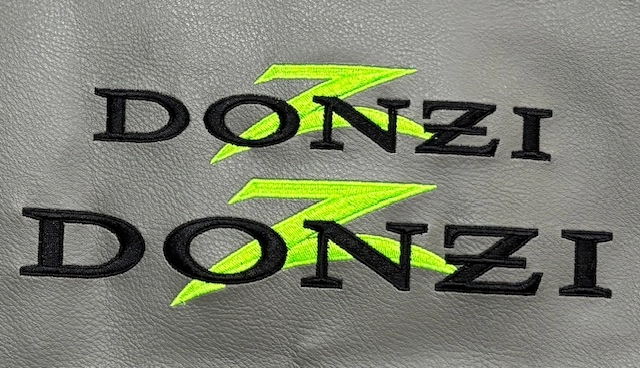The Art of Customized Needlework: Unlocking the Secrets to Creating Distinct and Remarkable Styles
Embroidery, a craft steeped in custom and creativity, holds within its elaborate stitches the power to transform material into a canvas of distinct expression. The keys to producing personalized embroidery designs that mesmerize the eye and leave a long-term perception lie in a delicate equilibrium of technique, creativity, and interest to detail. As we delve right into the world of personalized needlework, we discover the nuanced interaction between string selection, sew intricacy, and design customization that elevates a plain garment to a masterpiece. Join us on a trip with the art of custom-made needlework as we unwind the secrets behind crafting genuinely unforgettable and distinct developments.
Selecting the Right Embroidery Threads
When picking needlework threads, what vital aspects should you consider to guarantee the most effective outcomes for your personalized layouts? The option of embroidery thread is crucial in identifying the last outcome of your embroidered style. Among the key factors to consider is the product of the string. Various materials such as cotton, polyester, rayon, and silk supply differing degrees of shine, resilience, and texture. It is necessary to select a string material that enhances the fabric you are stitching on and lines up with the wanted look of the style.
Thicker threads can add measurement and structure to your design, while finer threads are optimal for intricate details and little text. Additionally, thinking about the color fastness and washability of the string is critical to guarantee that your personalized designs preserve their quality and vibrancy over time.
Checking Out Different Stitch Strategies
To explore the realm of 'Exploring Various Stitch Strategies', one need to grasp the ins and outs and subtleties that each sewing approach brings to the art of needlework. Different stitch strategies not just add visual rate of interest but also add to the total structure and measurement of the style. One popular stitch method is the satin stitch, which includes closely packed parallel stitches to create a smooth and glossy surface area, perfect for completing shapes and creating bold details.
On the various other hand, the backstitch is a functional method commonly used for detailing and including fine information. It includes stitching backward to produce a strong line of embroidery. Additionally, the French knot stitch includes a responsive aspect to designs, perfect for creating distinctive accents like blossom centers or decorative touches.
Checking out different stitch strategies allows embroiderers to have fun with light, shadow, and deepness within their styles, boosting the aesthetic charm and artistic top quality of their needlework tasks. By grasping different sewing techniques, one can unlock countless opportunities for creating unique and memorable personalized embroidery items.
Incorporating Personalized Layout Elements
Having actually checked out the intricacies of different stitch techniques such as the satin stitch, backstitch, and French knot, the focus now shifts towards including individualized layout components in customized needlework tasks. Customized style components play an important function in making embroidery projects truly distinct and unforgettable.
Another method to integrate personalized design components is by including symbols or concepts that hold unique meaning to the recipient or mirror their passions and personality. Incorporating a preferred blossom, animal, or hobby-related symbol can make the needlework design extra meaningful and customized. In addition, selecting colors that reverberate with the recipient or align with the desired motif can even more boost the customization of the needlework job.
Mastering the Art of Color Coordination

One secret element of color sychronisation is understanding color concept. This consists of knowing just how various shades connect with each other, the feelings they convey, and just how they can be integrated to produce visually attractive layouts. By using shade concept principles, embroiderers can produce harmonious shade palettes that enhance the total appearance of the style.
Furthermore, focusing on comparison is critical in color coordination. Using contrasting shades can help specific components of the style pop, enhance clarity, and create an aesthetically dynamic needlework item. By understanding the art of color control, embroiderers can boost their designs and develop remarkable items that resonate with clients and visitors alike.
Enhancing Structure With Advanced Embroidery Stitches
French knots, for instance, lab coats are best for including little, elevated dots to your design, simulating the look of beads or developing a textured surface. Bullion knots, on the various other hand, can be utilized to create twisted, ropelike elements that add a glamorous feeling to the embroidery. Seed stitching entails little, scattered stitches that can complete locations with a speckled texture, while turkey job produces cosy, dimensional accents similar to animal fur or foliage. Explore these advanced embroidery stitches permits you to press the limits of traditional needlework and develop genuinely special and visually attractive structures in your styles.
Conclusion
To conclude, the art of personalized embroidery includes a mix of selecting the best strings, discovering different stitch techniques, integrating customized style components, grasping shade control, and boosting texture with advanced stitches. By understanding and applying these crucial elements, embroiderers can create distinct and memorable layouts that showcase their creativity and ability. Embroidery fanatics can unlock the keys to creating lovely and custom items that attract attention and leave a lasting impression.
Comments on “Customized Lab Coats with Embroidery for Medical Professionals”